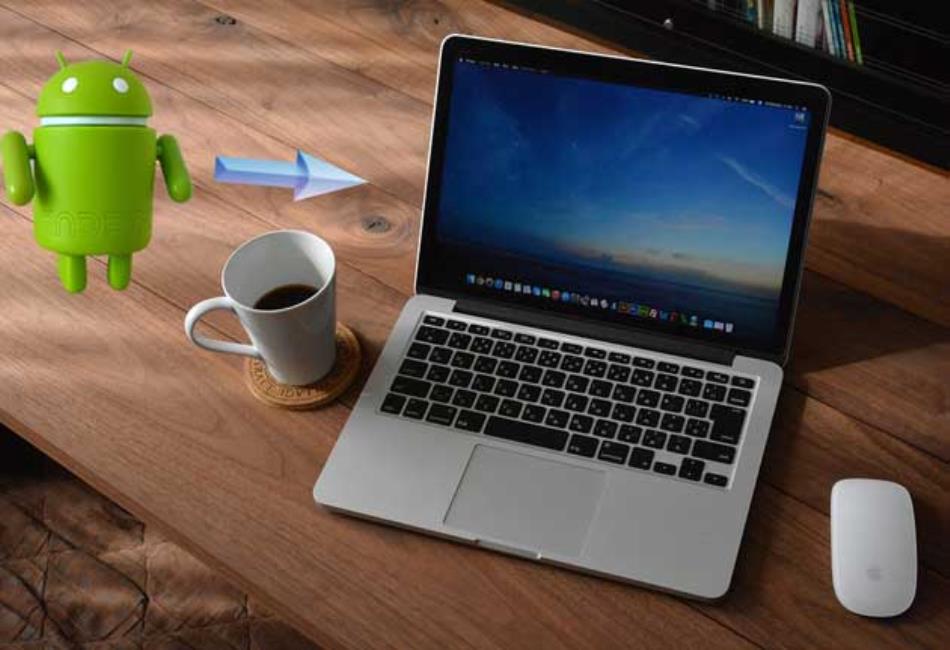You may feel annoyed every time you need to transfer files from your smartphone to your personal computer, right? Android phones do not connect easily with Macs, nor do iPhones with Windows or Linux OS. Nevertheless, you can’t use a PC or a laptop to make photos and videos, and you can’t edit some types of files on a phone. It is the main reason of your struggles, but I’m here to present a solution — how to connect Android to Mac.
Connect your Android device to Mac via USB
First, you need to prepare your hardware, which means establishing USB connection. Use a special cable for data, as USB‑C‑to‑USB‑C or USB‑C‑to‑USB‑A. Plug it into your Mac. Pay attention, charge-only cable doesn’t suit it.
Next, you have to enable file transferring on your phone. Pick the right mode on your settings: USB preferences → File transfer / Android Auto.
Open access to your phone (use either ADB or MTP mode). Then you have to turn on Finder, or install it if you don’t have it, and when connecting, you can move pictures, photos from Android to Mac. That’s how you can transfer files with USB cable.
Step-by-Step Guide: Connecting Android to Mac via Wi-Fi
To connect an Android 12-plus device to a Mac over Wi-Fi:
- Unlock Developer options by tapping Build number seven times.
- Open the new Developer menu.
- Toggle Wireless debugging; the phone shows an IP: port pair and a six-digit pairing code.
- On the Mac, open Terminal and enter adb pair <IP>:<pair-port> <code>, then run adb connect <IP>:5555 and wait for the “connected to” prompt.
- Launch Android File Transfer — or simply open Finder — and the handset appears as an external volume ready for drag-and-drop at 60-90 MB/s on a clean Wi-Fi 6E channel.
In a shop-floor test, a 4.1 GB ProRes clip traveled from a Pixel 8 Pro to a MacBook Pro M3 in 58 seconds, fast enough to slot straight into Final Cut without breaking the edit flow.
MacDroid as an alternative for Android File Transfer
Now, we have come to one of the best ways of transferring files from Android to Mac. I’ve been checking and comparing various methods, but the best way is to connect Android to Mac via MacDroid, this is my absolute conclusion. This app makes the connection process simpler and faster. You can not worry about your cable if you’ve lost, damaged, or forgotten it at home. All you need is to install the app, give access to your Android from your Mac, and begin to upload your files wirelessly. Keep reading, I’ll cover more details.
USB vs. Wi-Fi: Real-World Speed and Workflow Tips
| Transfer method | Average throughput | Round-trip latency | Best-fit scenario |
| USB-C 10 Gbps (MTP/ADB) | 300–900 MB/s | 2–4 ms | Bulk media backup, firmware flashing |
| Wi-Fi 6/6E (ADB wireless) | 40–90 MB/s | 8–15 ms | On-the-go edits when a cable isn’t handy |
| MacDroid over USB | ~250 MB/s | 3–5 ms | Continuous syncing to multiple test devices |
| MacDroid via Wi-Fi | 35–80 MB/s | 9–17 ms | Wireless continuous sync when USB ports are occupied or distant workbench setups |
Troubleshooting Common Connection Glitches
- macOS privacy prompts
Apple’s current security model sandboxes first-time USB, Wi-Fi, and Bluetooth connections. When you plug an Android phone in or start an ADB-over-Wi-Fi session, macOS pops up an “Allow accessory to connect?” or “Network volume wants access to removable media.” If you click Don’t Allow, the link remains hidden.
Fix: Open System Settings → Privacy & Security → Accessories (for USB) or Files and Folders (for network volumes). Locate Android File Transfer, MacDroid, or Terminal in the list and switch to Allow. Unplug/re-plug to refresh without rebooting. - Corrupt ADB keys
ADB stores a device–host trust pair in ~/.android/adbkey (Mac) and /data/misc/adb/adb_keys (phone). A sudden power loss, OS upgrade, or antivirus sweep can scramble one half of the pair, leaving every adb connect call stuck at “unauthorized”.
Fix:
- Disconnect the handset.
- On the Mac, delete the local key: rm ~/.android/adbkey*.
- On the phone, in Developer options, tap Revoke USB debugging authorizations.
- Reconnect via USB, accept the fresh fingerprint dialog, then retry adb tcpip 5555 followed by adb connect <IP>:5555. The new keypair propagates, and wireless sessions work again.
- Flaky Wi-Fi channels
High-density offices cram access points into the same 2.4 GHz and 5 GHz bands, causing retries, variable latency, and drops that break large transfers.
Fix:
- Pick 6 GHz (Wi-Fi 6E) or a DFS-enabled 5 GHz channel. Both sit above the congested 2.4 GHz spectrum.
- Reserve the phone’s IP in DHCP so adb connect always targets the same address.
- Check signal quality with adb shell dumpsys wifi | grep RSSI. A steady RSSI of –60 dBm or better keeps throughput near the 70–90 MB/s range cited earlier. If interference persists, copy via USB for large batches and fall back to Wi-Fi only for quick tweaks.
As you can see, whatever the problem could happen, you can always solve it. I highly recommend the MacDroid app for transferring files between Android and Mac. Believe me, it saves you time and effort, gives you speed and comfort.
